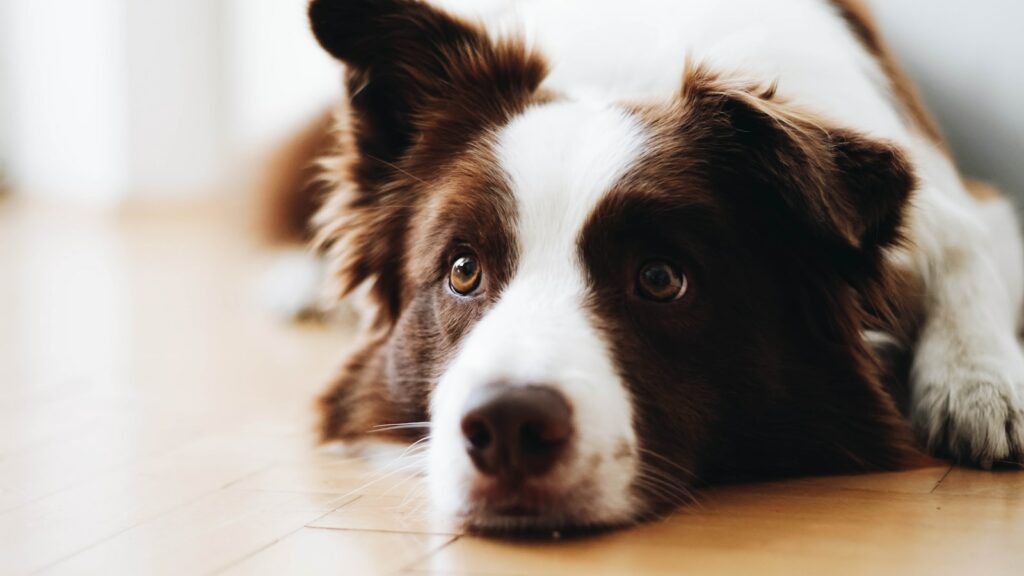15 Risks of Leaving Your Dog Alone for Too Long

Leaving your dog alone for too long can lead to a range of behavioral, emotional, and physical issues. While many dogs can tolerate being left alone for short stretches, prolonged periods of isolation can harm their well-being. Here are 15 risks you need to be aware of when leaving your dog alone for too long.
Separation Anxiety

Separation anxiety is one of the most common problems that can develop when dogs are left alone for too long. Dogs are social animals, and when they’re isolated for extended periods, they can become anxious, stressed, and distressed. Signs of separation anxiety include barking, destructive behavior, and even self-harm, such as chewing on their paws.
Destructive Behavior

Dogs left alone for too long may channel their boredom or anxiety into destructive behavior. They may start chewing your furniture, digging at carpets, or knocking over objects in the home. Not only is this damaging to your property, but it’s also a sign that your dog is struggling to cope with their isolation.
Excessive Barking or Howling

Lonely or anxious dogs often resort to excessive barking, whining, or howling to express their distress. This behavior can disrupt your household and cause issues with neighbors, especially if you live in an apartment. Continuous barking is a sign that your dog is feeling neglected or stressed due to being alone.
Health Issues from Lack of Exercise

If your dog is left alone without access to regular walks or playtime, they can quickly become inactive, leading to weight gain and other health problems. Lack of exercise can also lead to joint issues, muscle atrophy, and a decrease in overall well-being. Remember, dogs need physical activity to stay healthy and happy.
Accidents and House-Training Regressions

Even well-trained dogs can have accidents in the house if left alone for too long without a chance to relieve themselves. This can be particularly stressful for dogs who have been house-trained, as they may feel guilty or confused about breaking their training. Regular bathroom breaks are essential for their health and routine.
Loneliness and Depression

Dogs are naturally pack animals, and prolonged periods of solitude can lead to feelings of loneliness and even depression. Signs that your dog is experiencing loneliness or depression include a disinterest in activities they once enjoyed, lethargy, reduced appetite, and excessive sleeping.
Increased Aggression or Fearfulness

A dog that is often left alone may become more fearful or aggressive when interacting with others. Isolation can cause dogs to become overly protective of their space or develop anxiety around strangers and other animals. This change in behavior can make socializing difficult and lead to further behavioral problems.
Self-Harm or Compulsive Behaviors

When dogs are left alone for too long, some can develop compulsive behaviors as a way to cope with their stress and boredom. These behaviors can be excessive licking, chewing on their paws, or even biting at their skin. Over time, these actions can result in physical harm, such as sores or infections.
Escape Attempts

A dog that feels trapped or anxious while alone may attempt to escape their environment, especially if they’re in a yard or an area where they feel confined. Escape attempts can lead to injuries, such as broken teeth, paws, or cuts from trying to claw or bite their way out. Escaped dogs also face the risk of getting lost or hit by a car.
Absence of Mental Stimulation

Dogs left alone for long periods without toys, puzzles, or interaction may suffer from boredom due to a lack of mental stimulation. Boredom can exacerbate destructive behavior and lead to frustration. Mental engagement, like puzzle toys or training exercises, is vital for keeping your dog’s mind active.
Development of Negative Habits

Dogs that are left alone for extended periods can develop negative habits such as chewing on things they shouldn’t, excessive licking, or compulsive barking. Unfortunately, these habits can become ingrained and hard to break, even after you’ve addressed the root cause of their behavior—prolonged isolation.
Overeating or Loss of Appetite

Prolonged isolation can affect a dog’s appetite in two ways: some dogs may overeat out of boredom, while others can lose interest in food due to loneliness or stress. Both scenarios can lead to health problems, including obesity or malnutrition. It’s important to monitor your dog’s eating habits closely if they’re left alone for long periods.
Increased Risk of Injury

When left alone, dogs may attempt risky behaviors, such as jumping on furniture, trying to reach high places, or running in confined spaces. Without supervision, these activities can lead to injuries. For example, your dog could fall, get tangled in cords, or knock over objects, leading to cuts, bruises, or worse.
Inability to Develop Social Skills

Dogs that are regularly left alone miss out on important social interactions with humans and other dogs. This isolation can result in poor social skills, making it harder for them to interact with other pets or people. A well-socialized dog is more confident and less likely to exhibit fear-based behaviors.
Decreased Bond with the Owner

Leaving your dog alone for too long can damage your relationship. Dogs need to know they’re not alone. Prolonged periods of separation can make your dog feel disconnected or less trusting, which can affect your relationship and make training or behavior management more difficult.





